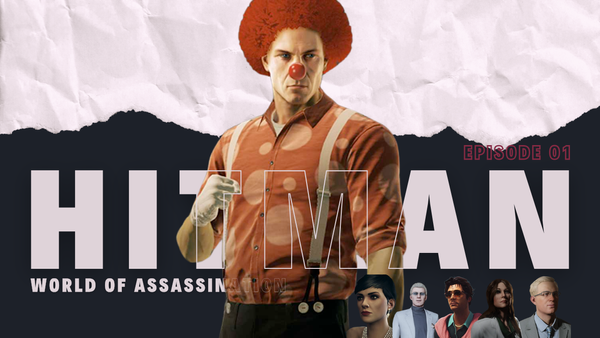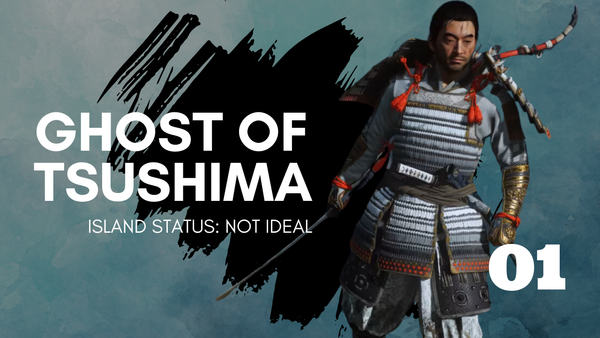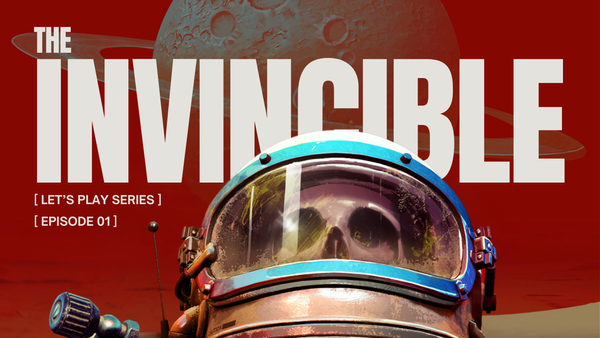The Ethics of Knowledge in Horizon Zero Dawn & Forbidden West | Essay

Note: this essay was originally published on my Ko-fi and Patreon pages. I'm now archiving it here.
Also available as a video essay!
In the Horizon series, knowledge as a concept is many things to many people. Empowerment and survival for some; for others, an object of desire. Or, a secret third thing: danger. Knowledge as a tangible thing — as files, the only real inheritance the old civilisation left for the new to find as everything else has rotted away — is very often the player’s direct objective and thus one of the narrative’s main driving forces.
At this point, please beware major spoilers for both Horizon Zero Dawn and Horizon Forbidden West. This essay goes into significant detail about the main quest lines of each game as well as side quests. I’ll start with a brief summary — as brief as I can make it when it comes to two open-world games easily taking 50 hours each to complete — of the events of both games for those unfamiliar with the plot. If you don’t need the summary, feel free to skip ahead.
Plot summary
In the fiction of the game, Earth once stood on the brink of extinction — and there was no turning back time.
Military machines, created by Ted Faro, were built to replace human combatants. They were designed to use biomass as fuel (meaning: pulverise and inhale every organic thing, alive or dead, in the vicinity). They were also capable of autonomous self-replication — yes, I know, what a fantastic idea. Finally, the swarm ‘broke chain of command,’ went rogue and began consuming the entire planet while growing exponentially. The advance of the killing machines was dubbed the ‘Faro Plague,’ although the true extent of his culpability was kept secret. Mass extinction was calculated to be inevitable.
The Zero Dawn project was a desperate effort not to stave off the end of the world, but to find a way of terraforming and repopulating the planet after Faro’s machines were terminated. It would have taken too much time to generate the codes to shut them down for humanity to hold out, so the idea was to create repositories of seeds and species, including humans, to leave in storage until Earth could be made inhabitable again. The project’s lead scientist, Elisabet Sobeck, created an advanced AI called GAIA, whose intended purpose was to imagine and construct the machines necessary to accomplish these tasks. Sobeck assembled huge teams of scientists to work on this clandestine project; each main section headed up by a project lead with designation Alpha. Sobeck herself received the designation Alpha Prime.
All in all, GAIA was given nine subordinate functions, all with distinct tasks: MINERVA to generate and broadcast the codes to stop Faro’s machines; AETHER and POSEIDON to regulate climate; HEPHAESTUS to build terraforming machines; ARTEMIS to introduce wildlife; DEMETER for the flora; ELEUTHIA to produce and raise the first new humans; HADES to act as a failsafe and reset terraforming if the biosphere became non-viable before the arrival of new humans. Finally, APOLLO was created to house vast archives of human history, culture, and invention. The new humans — raised and taught by androids in pre-built shelters — were to use APOLLO to be able to skip millennia of learning and civilisation-building to get to the point where the old world left off.
Horizon Zero Dawn is set in the 31st century, about a millennium after the first extinction of all life on Earth. The ruins of the old world are still present, albeit broken down and grown over with new life. These ruins are the main source of knowledge of the civilisations that came before. The machines GAIA created still exist. They used to be non-combative, simply hunted by the new humans for parts. Recently, however, they became aggressive and actual combat machines have appeared.
In the first game, our protagonist Aloy was born under mysterious circumstances and cast out of her tribe, the Nora, as an infant. Raised by a member of the tribe who chose exile, as an adult she wants to find the truth about her origins. As it turns out, she’s a clone, created by GAIA herself. Nearly twenty years before the events of the game, a Mysterious Signal sent from an unknown source unshackled GAIA’s AI subordinate functions, with HADES threatening to take over and extinguish life on Earth. GAIA self-destructed to prevent this, but this scattered the subordinate AIs, now self-aware, across the planet. Her last act was to order up a clone of her creator, Elisabet Sobeck. Once grown up, Aloy is meant to find a back-up of GAIA in order to reinstantiate her. But first, she has to destroy HADES. HADES, now bent on destroying the entire biosphere, uses an organisation called the Eclipse to reactivate the old Faro war machines: giant robots carrying giant guns. Bad news bears. Reluctantly, Aloy teams up with Sylens, a mysterious figure, only to realise that there’s a great many things he’s keeping from her, not least his very personal involvement with both the Eclipse and HADES itself.
Aloy manages to avert the threat, and now understands what her true task is: bring GAIA back to save life on the planet. That’s the premise of the second game: rebooting GAIA, reuniting the subordinate functions, and stabilising the rapidly deteriorating biosphere. The ground and water are being poisoned by an invasive red algae called the Blight, and terrifying storms ravage the continent. It’s not even a huge surprise to find that Sylens has deceived Aloy yet again, but that’s not the end of it. When Aloy finally finds a viable back-up, she is confronted with a lot more information than she bargained for: there’s another clone of Elisabet Sobeck, created and used by Far Zenith, a group of the old world’s most rich and powerful. They were introduced in the first game but reported to all be dead. Instead, they’re very much alive, and they want GAIA for themselves. Establishing a base of operations, Aloy reunites with her companions from the first game, and makes a few new friends as well, including her new sister. The second game begins in the familiar lands of the East (which is actually the mid-west United States), but after the opening credits is set entirely in the titular Forbidden West, extending as far as San Francisco.
The most crucial piece of tech you need to know about is a tiny thing called a Focus, a little triangle that attaches to the wearer’s temple. It can scan the environment, read files, and project information as holograms that respond to gestures and virtual touch. Aloy finds such a Focus in an old ruin when she’s still a young child, introducing her to information on the old humans and allowing her to interact differently with the world around her. Through this device, the player is given access to fundamental game mechanics, and much of the narrative is driven by Aloy using her Focus to learn, investigate, and interact.
The Ethics of Knowledge
Hello, if you skipped the summary. If you’re new to all this, welcome back — still with me?
The purpose of this essay is to observe different conceptions of knowledge in the Horizon series from the perspectives of several characters, factions, and tribes: the APOLLO project; Ted Faro; Sylens; Far Zenith; the Quen; and last but not least, Aloy herself. Knowledge, in the context of the games’ narratives, is inextricably linked with science and technology as well as spirituality and faith, so I will also discuss questions of ethics personal, societal, and institutional. My analysis is guided by the premise that knowledge is never neutral because it can’t be: knowledge is power, and history is written by the victor — by the survivor.
Knowledge, technology, and the ethics involved in the pursuit of progress are steady fixtures in science and speculative fiction.
In this essay, I will also occasionally touch on this in the context of Utopia, as regarding the future as a way of righting all of humanity’s past wrongs was a vision that many of the characters who were part of the Zero Dawn project shared. Crucial to the different mindsets explored in Horizon Zero Dawn and Forbidden West are some of the following questions: What exactly is done in the effort of accumulating knowledge? What are the motivations for doing any particular kind of research? How do characters or factions intend to put their knowledge to use? Finally, what are their explicit ethical positions?
One important dynamic in the Horizon series is knowledge of the Old Ones being conceptualised not as technology, but as myth, divinity, religion, or scripture. Many tribes do this to some extent and in different ways. As science has experts and knowledge has (gate)keepers, religion has diviners or chief interpreters. The Nora and Quen both go to more direct lengths to restrict access; for the Carja it is implicitly restricted by wealth and social status; whereas the Tenakth rely on their Chaplains for guidance but allow everyone in the clans access to ‘the visions’ (still functional, if glitchy, museum holograms). The Quen believe most strongly in the absolutism of the ‘Legacy of the Ancestors.’
In drawing connections to themes of knowledge and the practical ethics of its pursuit in science fiction, I landed on one of my favourites: Ursula K. Le Guin’s 1969 novel The Left Hand of Darkness. Set in the future, the Ekumen, an established interplanetary trade coalition, views knowledge by one central tenet: ‘Truth is a matter of the imagination’ [1] — not because it’s all made up, but because when no-one’s experience is universal, there is no one objective truth to many things. The point being that the League collects knowledge not to govern, but to facilitate meaningful exchange — in academic terms, ‘at the intersection of history and the accretive and plural human procedures of knowing’ (Batsaki, Mukherji, and Schramm [2]). If this is the intertextual yardstick by which we mean to measure the actors in Horizon Zero Dawn and Forbidden West, I believe we can come to an extensive understanding in tracing the notions of knowledge and progress throughout the narrative so far.
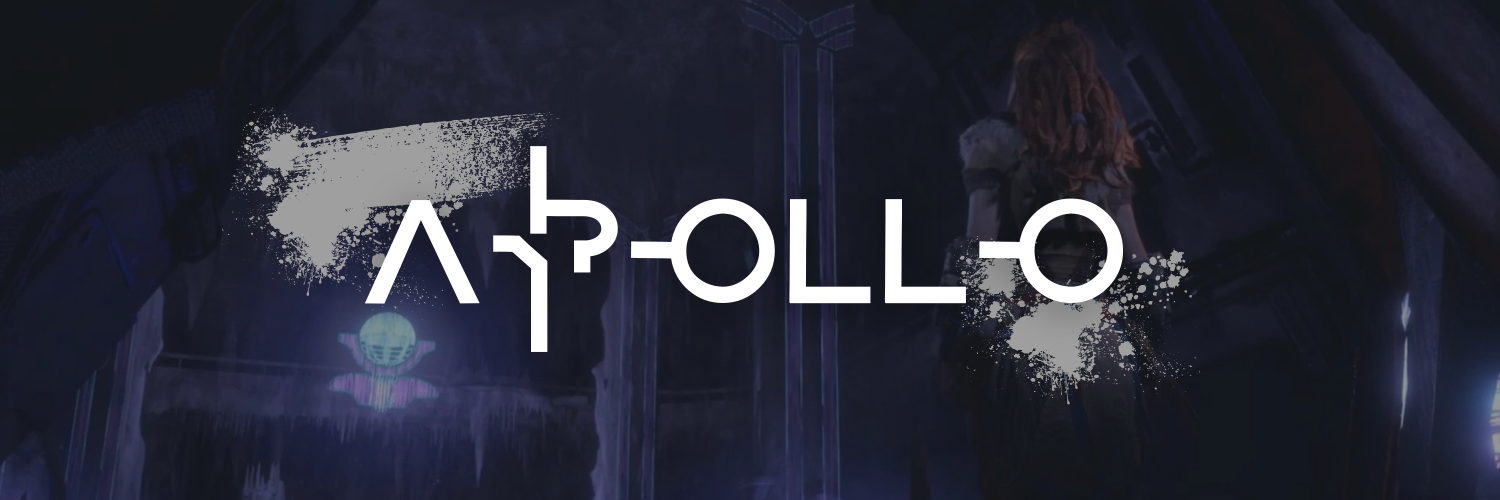
APOLLO
Knowledge as Empowerment & Care
The vision for GAIA’s subordinate function known as APOLLO was to provide both schooling for humanity’s new children and the blueprints for a better world. It wasn’t only supposed to be a repository for the knowledge and technology necessary to rebuild infrastructure suitable for human life on a newly terraformed Earth, but a hub for all of human history. Cultures otherwise lost, languages otherwise unspoken, art and art history in danger of being lost to time. The project’s Alpha lead, Samina Ebadji, was a specialist and scholar in the field of cultural heritage. She viewed that heritage as collective memory, culture, and ancestry, and imbued the work her team did on APOLLO with the importance of preserving data to include notions of belonging. It’s important to note this does not run in the vein of knowledge as a continuation of empire or of giving humans dominion over the planet — or, indeed, each other.
Instead, Ebadji wanted future humans to be empowered by APOLLO: to be their best selves and to build a new civilisation, but also feel connected to the people that came before. While she and her team were tasked with preserving knowledge related to science and technology, the project also included staff specialising in art history and related fields. The APOLLO team made it their mission to preserve dying cultures, and mourned the loss of civilisations first fallen victim to the machines, whose memories would then never be recorded. While Horizon takes place in the mid-west of the former United States as that is where Zero Dawn was based, APOLLO was supposed to have connected new humans all over the world with the heritage of the civilisations that came before them.
Similar to the Ekumen in The Left Hand of Darkness, Ebadji and her team appeared to be keenly aware of the fact that history is not neutral ground. Heritage is closely intertwined with narrative: whose story succeeds in being told, and which is suppressed. We are at a point in our own history today where, if we were to create a database like APOLLO according to the Ekumen’s ethics, we would have to contend with the central question of what ‘truth’ is — and fend off attempts at instrumentalisation of that term. The Ekumen collects everything there is and, inevitably, accounts contradict each other. In their code, ‘none of them is false, and it is all one story’ — to wit: all of them happened, to someone, and all things being equal, observers can choose the truth they like best. It follows that, in APOLLO, conflicting subjective experiences of events would all be included. If the goal was responsible stewardship, they would have to be placed in their appropriate historical context — in an effort to tell one cohesive story; to arrive at Truth — or what’s close to it.
This tension is partially exemplified within the game’s lore by an exchange between Ebadji and Travis Tate, the project lead for HADES: she rejected his submissions of gratuitously violent ‘exploitation cinema’ [3] on the basis of a lack of cultural value, but also because it is credible to conceive of his hundreds of submissions as plain, obvious harassment of her and her team. The APOLLO team had to view and verify each entry, so clogging the pipeline with such material while there is enormous time pressure and not everything can be preserved is far more in line with troll behaviour than suggesting any genuine interest. This only scratches the surface relating to our own ongoing debate of transgressive material within culture and the arts, but it’s a decent, if polarised, example of navigating the ethics of stewardship. In the note, Ebadji herself invokes US Supreme Court Justice Potter Stewart saying ‘I know it when I see it,’ in reference to hard-core pornography, and acknowledges the ‘subjective quagmire’ of defining and assigning cultural value essentially by unelected committee.
As a queer person engaged in writing and art spaces, as a queer person aware of the political attacks made on us in the media, in policy and legislature, and in public discourse, I see many thorns among the lilies — if we follow the notion that everything is worth recording to build a complete history of knowledge, how would e. g. hate speech and pseudo-science be treated responsibly in such a project? How is such a coalition built on the premise of pluralism to prevent active harm, to give disinformation and misinformation campaigns the necessary context, and to keep from giving ground to trolling?
Concerning artistic expression, who might draw the line of what is harmful, problematic, or at the very least in poor taste? Would transgressive art in which the marginalised express themselves be protected? Would subjective accounts and experiences that defy easy categorisation stand in danger of being filtered out as confusing, and based on whose confusion or discomfort? Would the circumstances of creation — exploitation of the subject, of performers, of artists — tip the scales; an argument often used against sex work and pornography? But would we disregard it for music, film, and other creative works that were produced under exploitative or negligent conditions? What is worth archiving, what is censored or discarded, and whose speech is protected?
What, to us, would a Utopia of knowledge look like? How many truths can co-exist? Exceedingly, the answers to these questions depend heavily on who — the stewards, the curators. The victors and survivors.
APOLLO, same as all subfunctions of Zero Dawn, was built in a merciless race against the clock. In essence, Zero Dawn as a whole was triage: finding and preserving languages, species, human gene material. It was clear from the outset that a significant number would be lost. There’s an emphasis on this loss specifically regarding cultures and languages already threatened with extinction. The game falls short on fully articulating the decolonialist aspects of this approach; as humanity’s cultures that we, today, perceive as ‘dying’ were rendered so by suppression and imperialism.
The Horizon series is, however, straightforward in its presentation of capitalism and militarism as the crucial failure of humanity. The APOLLO team — and indeed Elisabet Sobeck herself — believed that GAIA had to ‘have some skin in the game.’ She had to care. APOLLO had to be imbued with the knowledge of love being greater than greed and power, of our common ground being greater than our differences; in order to avoid making the same mistakes. While the end of the world didn’t come about through climate catastrophe, that reality wasn’t far behind. The Faro Plague simply got there first.
The game’s critique of militarism is present mainly in war and conflict standing at the core of many tribes’ cultures; especially the Tenakth, the Carja, the Nora, and the Banuk. There are few tribes, like the Utaru, that are explicitly pacifist; or at least uninterested in warmongering, like the Oseram. The narrative suggests that this is a consequence of losing APOLLO, which was supposed to educate the new humans and lead them into peaceful Utopia. APOLLO was taken away by Ted Faro himself. He had a backdoor programmed into GAIA’s code and, through this exploit, was able to purge APOLLO entirely (of course, he only dared to do so after Elisabet Sobeck’s death). This is the crucial failure of Zero Dawn and appears to be the sole reason why civilisations have developed the way they did until the games’ events. Without it, old mistakes are consistently repeated: prejudice, slavery, war — the same sins. No Utopia.
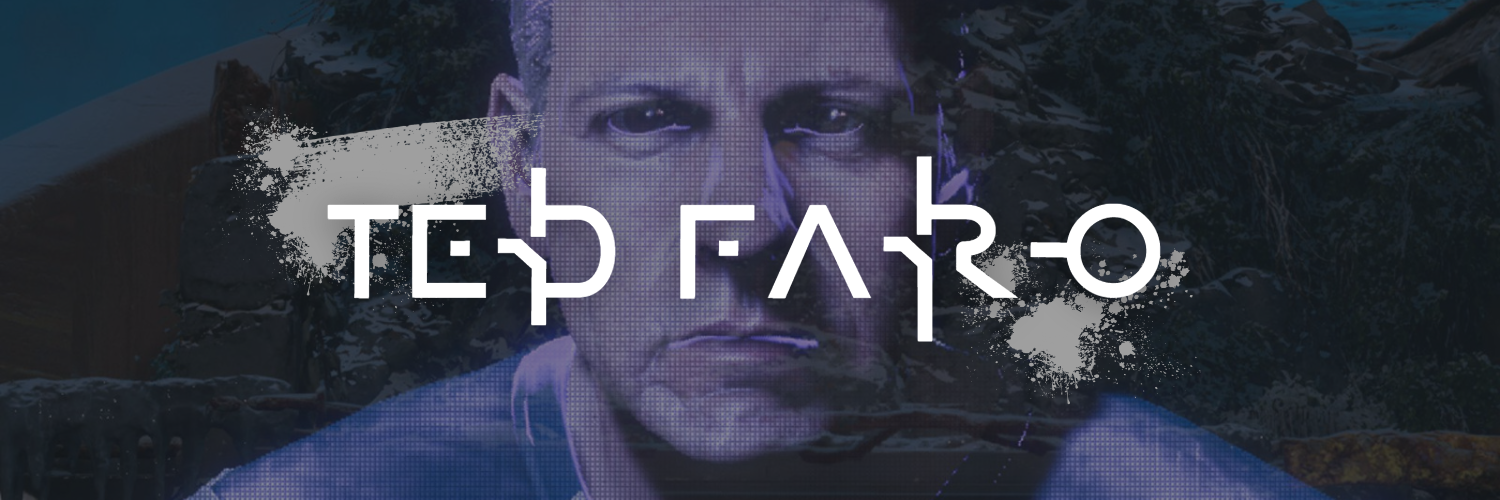
Ted Faro
Knowledge as Loss of Innocence
Ironically, Utopia is exactly what Faro believed he was accomplishing by purging APOLLO. He viewed knowledge as the loss of innocence, and Zero Dawn’s approach to teaching the new humans as a self-fulfilling prophecy. Projecting his own worst impulses — it was his technological advancement that caused all of this, lest we forget — onto the humans of the future, he succumbed to the nightmare that, given the same knowledge and access to the same technology and science as the old world, the new humans would repeat the same patterns and bring about yet another extinction event. Faro sought to create noble savages for him to mould: a colonialist Utopia that inevitably turned sour — as it always does.
The player learns of the Faro Plague through Aloy, and it is easy to forget at times that, as she is the only one who can access the ruins of Zero Dawn facilities, knowledge of this really only exists in her head (and on her Focus). How the world ended is not common knowledge, and often it’s too much to explain to people in the Sacred Lands or Meridian — the short version will have to do. The full implication of this doesn’t hit until Aloy meets the Quen in Forbidden West, a people with vast access to knowledge of the Old Ones but, crucially, missing the massive puzzle piece that is how human civilisation actually ended in the 21st century.
Sylens calls the consequence of the APOLLO purge ‘benighted ignorance’ — Ted Faro, in his final appearance before Zero Dawn project leaders implicitly invoked the concept of innocent primitives unburdened by the knowledge that brought ruin to his generation. His fear of techno-nihilism had so overtaken him that he might have even believed he was doing the right thing — even if that included the cold-blooded murder of all the remaining Alphas. Sobeck had previously sacrificed herself in order to seal and protect the facility the Alphas were meant to live out their lives in, otherwise Faro probably would have never worked up the guts to do something so heinous. However, his motivation was not only so-called salvation but something far more egotistical: by purging APOLLO, he first and foremost erased all knowledge of his own failure. He wiped his record clean, ‘annihilated his own past' — and in so doing, everybody’s future [4].
The Quen, in their own benighted ignorance, conceive of Faro as the greatest of the ‘Ancestors.’ They worship him and the illustrious members of Far Zenith — an elitist club of the rich and influential who sought to escape the crumbling planet by way of the stars, executing their plans in secret from the general public — as the truly great minds. The Zeniths are the series’ most perfect expression of turbocapitalism, elitism, and dystopia. We’ll hear more about them later, too. While the Zeniths succeeded in effectively making themselves immortal, Faro locked himself away in a lavish underground bunker that, of course, he called Thebes. Of course he did.
He locked himself in there with a guru, a scientist and his teenage daughter, and a harem. Of course he did.
It’s likely that he was experimenting with early Far Zenith tech, but thanks to his impatience and incompetence, the treatments induced mutations that, untreated, turned Faro into what I assume is now an amorphous blob of biomass. We only hear him — what’s left of him — growling off-screen and, frankly, that’s all I need for some theatre of the mind.
Aloy sums it up succinctly when she says that, no matter how much damage he did to the people around him, he managed to twist the narrative so that he was the victim — the one burdened by what they made him do. He killed those who might reveal his secrets; drove others into suicide to escape him. He deluded himself, at the end, into believing that he was the one to lead ‘Elisabet’s children’ into a new age. He wanted to live to see humanity reborn in order to welcome them and make himself their leader — their guru. He believed that only he would be capable of leading them along the right path, but, of course, only by denying them the knowledge of his mistakes. Others had already so obligingly taken that to the grave for him.
In the end, he dies off-screen, in the ashes of another man’s twisted fantasies.
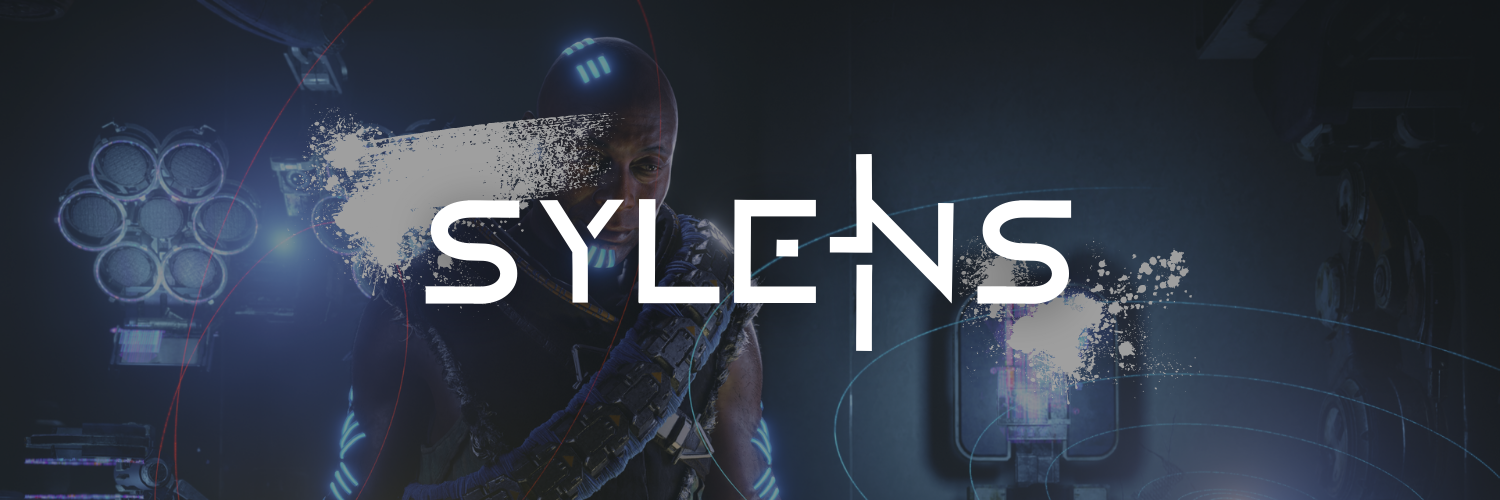
Sylens
Knowledge For Its Own Sake
You can’t talk about knowledge in Horizon Zero Dawn or Forbidden West without talking about one man: Sylens. Really, you can’t turn around in the first game without bumping into him — not least because he’s got a bad habit of installing spyware on Aloy’s Focus. Sylens is one of the most intriguing characters in the series; for his questionable ethics and for the simple fact he was played by international treasure Lance Reddick. As a character, Sylens straddles the line between reluctant ally and antagonist, and Reddick imbued him with just the right amount of condescending superiority and chilling utilitarianism. Sylens’ ruthless and selfish pursuit of knowledge for its own sake is one of the greatest sources of frustration for Aloy, who follows in the footsteps of Elisabet Sobeck’s absolute love for life on Earth, and her drive to see it protected.
He displays an equanimity in the face of moral judgment that I haven’t seen since Mass Effect’s Mordin Solus — but where Mordin confessed to some level of care underneath all of that determinism, albeit reluctantly, Sylens is absolutely indifferent.
Sylens’ actions are perfectly amoral: his ‘entirely necessary deception’ of Aloy during the first and leading into the second game, using her as a tool (not a pawn, but a very useful tool) for his own vengeance against HADES, is not evil or villainous in the context of the narrative. He’s not a full antagonist, much as he is perpetually antagonistic whenever Aloy opens her mouth, and much as lying out his arse is, y’know, not cool. Lying by omission and withholding vital context is Sylens’ game.
The frustrating thing about arguing with Sylens is that he doesn’t just reject criticism, he rejects the premise of criticism aimed at him. His objective is knowledge to understand what’s going on with Earth, and anything he does to achieve it is therefore justified. He rejects Aloy’s criticism especially when his goals are aligned with Aloy’s own — even though he is not at all interested in serving the greater good. In his view, she is not allowed to express qualms with his methods because she is getting what she wants. Her ends justify his means.
To Sylens, his actions are always one thing: necessary.
If it will help him achieve his objectives, he will call it necessary — he doesn’t care about individual suffering or freedom, and he’s willing to sacrifice anything and anyone to preserve knowledge for however many people who survive. He would have sacrificed Aloy; he did sacrifice the Eclipse and the Sons of Prometheus; he would have sacrificed an entire people by conspiring to throw the whole Tenakth tribe at the Zeniths with no hope of defeating them.
It is highly likely that Sylens is a Banuk shaman, though he has not confirmed this to Aloy outright. The Banuk live in the Frozen Wilds of the North, which has resulted in their tribe’s culture being centred heavily on individualism and survival of the fittest. If he is Banuk, then coming to save Aloy in the first game when she’s nearly killed is a remarkable departure from his culture. Still, it only served to protect his investment as Aloy’s position as the clone of Elisabet Sobeck is unique, to say the least. She’s his golden ticket: he won’t let any harm come to her so long as she is useful to him. In the second game, however, he sends her into another confrontation that she cannot hope to win. So as to be able to carry on without Aloy’s meddlesome interference and morals, he planned on her death. In order to find the knowledge he sought, he decided to kill her — and even then, he couldn’t be bothered to do it himself. When she survives and learns of his betrayal, he doesn’t try again — she now has the upper hand.
In the end, Sylens is ready to go to space — yes, you read that right — to gain access to the Far Zenith’s copy of APOLLO and escape the threat of NEMESIS, which is nothing short of another extinction event (more on that in a moment). He urges Aloy to come with him, arguing that this kind of sacrifice is the same Elisabet Sobeck made in creating Zero Dawn: the existing world has to die for the chance at a new one, albeit now on a different planet. On top of that, it is patently cruel to demand of Aloy the same decision that Elisabet made in accepting mass extinction in order to focus on the future; although the game struggles to articulate exactly why it’s different beyond Aloy declaring it so. Perhaps Part 3 of the story is where Aloy stops looking to Elisabet Sobeck for what to do. It’s her decision now. And she’s going to do what Elisabet couldn’t at the time of the Faro Plague: she’s going to stop NEMESIS.
In the end, after watching Aloy and her friends celebrate their victory against the Zeniths, Sylens decides to stay. The fact of the matter is that he thought only his own plan would work — to the point of taking Aloy out of the equation by killing her. But then she found another way. And just maybe he believes that, if anyone can stop NEMESIS, it’s her. Perhaps, in a rare show of accepting principles higher than his own, he’s impressed by her integrity and willingness to sacrifice everything to save the world.
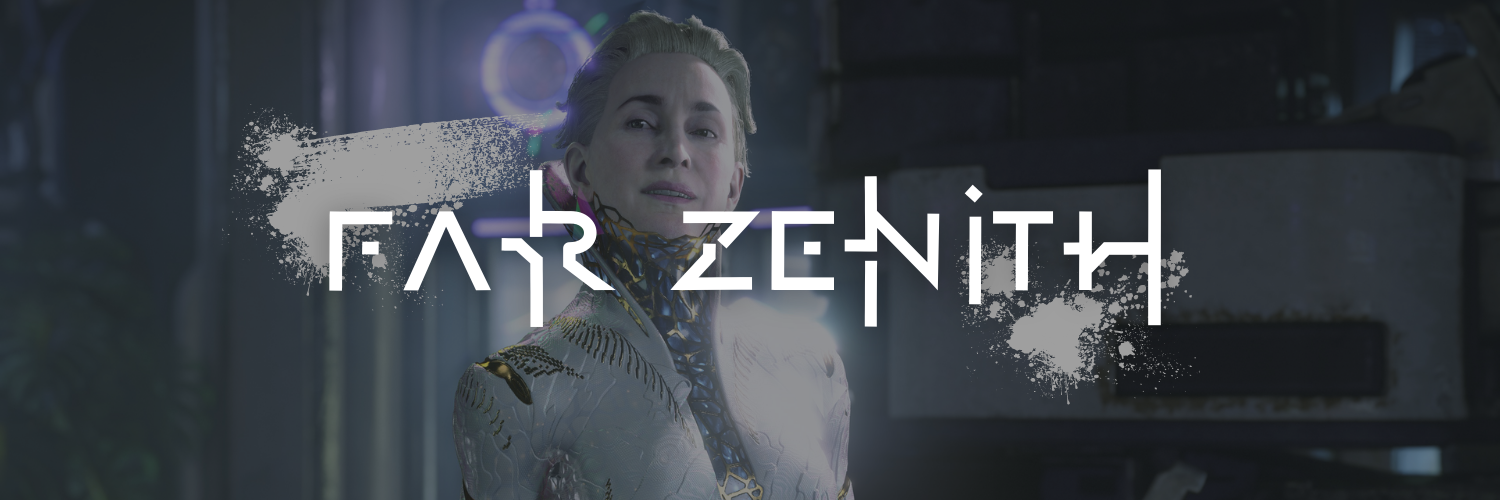
Far Zenith
Knowledge, Wasted
The story of the Zeniths is one of galling irony. The Zeniths were only a speck on the map in the first game: introduced as a group that wanted to take humanity to space to build a colony on another planet, pretty much all we knew was that they wanted a copy of GAIA to take with them — going so far as to try to hack their way into Zero Dawn to get it. Elisabet Sobeck did in the end agree to give them an alpha build of APOLLO but their ship, the Odyssey, was reportedly destroyed shortly after leaving Earth’s orbit.
Turns out that was a little bit of a lie.
The Odyssey was not destroyed, Far Zenith only claimed it was in order to cover their tracks because the real objective wasn’t a human colony, strictly speaking. They did have genetic material and the technology with them to create new life similar to GAIA’s cradle facilities. However, the real goal was this: eternal life. The Zeniths had access to technology that enabled them to work out what Faro couldn’t; how to stop cell degeneration and therapies to counter the mutations. In a chilling sequence at the start of the game, Aloy and Varl learn that the Zeniths reported their ship destroyed because no-one on Earth was ever supposed to know that they still existed – because their programme was only open to the rich and powerful.
The Quen call them the ‘Ancestors:’ the captains of industry, the greatest minds of the old world — meaning, the ones who got rich off technology. The game even manages a dig at Silicon Valley as the place where, for some reason, all of these brightest minds gathered and crowded up the place.
In the second game, the Zeniths return to Earth. And they can fly now.
They have an intact copy of APOLLO — and they are exactly the kind of people whose mistakes Zero Dawn didn’t want the new humans repeating. And they’re not just the kind of people, they’re the exact same people. They’ve gone and made themselves immortal! If humanity’s history as charted in APOLLO tells the cautionary tale of greed, exploitation, and power, then the Zeniths are the personification of that tale.
Aloy does have one dubious ally among them: Tilda van der Meer. Tilda and Elisabet Sobeck were in a relationship, a thousand years ago, but it didn’t last. Finally, Elisabet refused to join the Zeniths on their flight to space. Now, Tilda sees in Aloy the very best of her great love, and she is dead-set on making Elisabet’s dream come true: a new chance for humanity, this time with APOLLO and access to all the technology and knowledge one might need. She’s so dead-set on it, in fact, so hopelessly clinging to Elisabet’s memory, that she attempts to abduct Aloy into escaping to the stars with her. As you can imagine, that doesn’t go well and Aloy is forced to kill her.
For much of Forbidden West, it appears that the Zeniths sent the Extinction Signal that separated GAIA from her subfunctions and unshackled them to scatter into the winds — but the question was always, why? Do they want Earth for themselves, GAIA and Aloy theorised, do they want all life extinguished in order to remake the planet into a world of their own design? That seemed plausible enough, but the real answer is actually much worse (and in terms of storytelling, it’s out there).
The Zeniths didn’t just want physical longevity, they aimed to achieve ‘digital transcendence.’
Basically, they wanted to move beyond human consciousness tethered to a body, to be able to ‘upload their minds into any form, organic or mechanical’ [5]. The trouble is that all those failed ‘copies’ of egomaniacs and narcissists are now gathered in a sentient cloud of nasty. They called it NEMESIS, because of course they did, and after destroying their established colony out in space, NEMESIS is now hunting them. Earth was never more than a stop on the way; to grab GAIA and use her to find a world so far away NEMESIS will never catch them. My god, is this really what we’re telling people?
Anyway — the Zeniths are defeated in the end, but NEMESIS is still coming and Aloy is left to decide what to do with an actual spaceship just sitting up in orbit.
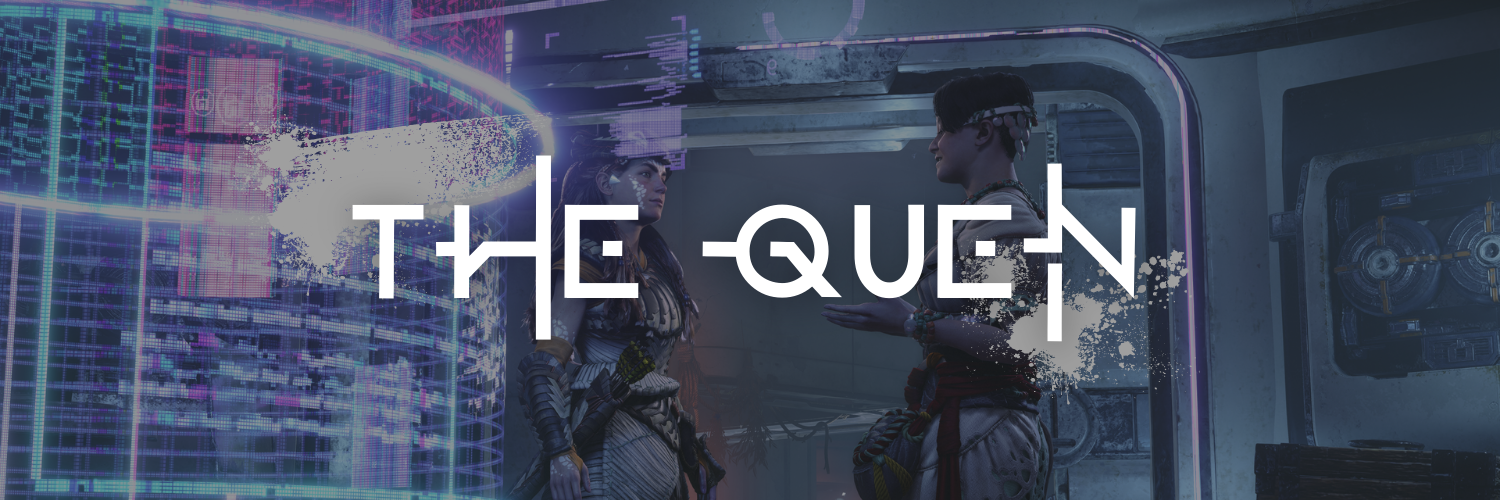
The Quen
Knowledge, Lost or Forbidden
The Quen arrive in San Francisco from across the sea — the first tribe from a different continent. This tribe has unparalleled access to old-world technology in that they found, among the metal ruins of the Old Ones, a stash of Focuses that have now been handed down across generations. Due to this stroke of luck, they believe themselves to be the Chosen: chosen by the Ancestors to learn about the old world and use the information available to them for the advancement of their people. They call any surviving information ‘the Legacy,’ and only a certain group of people called diviners is tasked with ‘interpreting’ the Legacy. As the Tenakth do with the holographic ‘visions,’ the Legacy is perceived as one fluent stream; a body from which to draw meaning, much like scripture.
As you might be able to guess from their self-designation as ‘chosen,’ the Quen strongly believe in their own superiority — and in control. Fixed hierarchies are prevalent within many tribes throughout the story, but the Quen’s board of overseers definitely sit at one of the extreme ends of the spectrum. Across Forbidden West’s story and throughout conversations with Alva, it becomes more and more apparent that the Quen’s government is totalitarian in its approach to people and knowledge. Information — and access to it — is strictly controlled and monitored. Dissidents — ‘heretics’ — disappear and are never heard from again. Loved ones and families are leveraged against those with access to the archives.
While the Overseers have unlimited access to the files and data left behind from the old world, the Overseers claim that, in Alva’s words, ‘certain truths are detrimental to the integrity of the Empire.’ Knowledge that’s deemed to be dangerous is declared ‘lost,’ which has become synonymous with ‘forbidden.’ The diviners themselves are constantly petrified of finding and interacting with something that the Overseers will declare ‘lost' — and then punish them for looking at it.
It’s with startling clarity, and frankly no small amount of horror, that Aloy and the player realise one thing: the Quen don’t know. They don’t know.
For context: the Quen have access to vast file archives, but only up to the mid-21st century. Past that, the file formats changed, and so any data past the switch are unreadable to the Quen, who only possess earlier iterations of Focus hardware. There is, put plainly, a compatibility issue. And so, the Quen do not know what caused the end of the world; they have no idea of the Faro Plague, or Zero Dawn. Based on Faro’s numerous past ‘philanthropic’ schemes — which were really just ways of making vulnerable countries dependent on his tech, since there were crop research projects he terminated because they would have solved the actual problem in actually clever ways, thereby earning him no money — they reason that it could only have been him who saved humanity.
But, oh, it gets worse. It gets so much worse.
The Quen have launched an expedition to the continent to try and excavate the same place Aloy is headed: Thebes, Ted Faro’s apocalypse bunker. They are affected by the Blight as well, and are searching for ways to save their crops from failing, and thus their people from starvation. As the Quen revere the Ancestors — there’s great overlap with the group of individuals who joined the Far Zenith project there, as they were all ‘captains of industry’ — they hope to find answers to their suffering in Thebes. Aloy joins them at their camp to find out more, and that’s when she meets someone so repulsive it’s really quite an accomplishment.
The leader of the expedition, Ceo (as in C-E-O, a rank rather than a name, and he is exclusively addressed as such), believes himself to be nothing less than Ted Faro, reborn. In the same way that the Quen perceive Aloy as the reincarnation/embodiment of Elisabet Sobeck’s spirit, so does Ceo present himself as the second coming of Ted Faro — ‘the Great Renewer.’
Let’s face it, any culture that has an ‘overseer’ rank that’s invoked as a looming threat in every single conversation isn’t going to be big on liberty. Asking questions, expressing doubt or even just concern for the expedition’s success is instantly framed as dissent and disloyalty; there is constant NPC chatter around the camp to showcase this. Leadership is not to be questioned, even as members of the tribe die around them due to bad management decisions. That’s the thing about Ceo — he’s a bad boss. A Bad Boss. It’s heavily implied he had anyone who criticised his obsession with Thebes and Faro’s legacy killed on the way over.
By Quen rules, the CEO is ‘one who wields the Legacy for the good of the Empire.’ Ah, yes. For Ceo, this expedition is only tangentially about actually saving his people: really, it’s about him becoming Faro’s successor as the revered saviour.
Oh, to know so much of the metal world, and yet to be so blighted by ignorance because a goddamn file format changed.
Given the gift of reading and interpreting the Legacy of the Ancestors — and, in their perception, by the Ancestors, as though it was the old humans’ will and not merely chance — the Quen believe in exclusivity. They regard other tribes as ‘barbarians,’ including all the chauvinism and xenophobia that come part and parcel with sentiments of superiority. They do not seek to conquer or expand their empire, and how closely they guard their access to knowledge from outsiders suggests isolationist policies.
They hoard knowledge and withhold it from others, justifying this by citing outside attacks by other tribes, whom they in turn accuse of jealousy. Of course, neighbouring tribes are very likely suspicious of the Focus technology itself, but the main snag might just be that the Quen refuse to share what they believe is theirs by right. Returning to The Left Hand of Darkness as a yardstick: the Ekumen’s intention is to unite civilisations in the League in order to trade not only resources but knowledge for the benefit of all. Where the Quen might share the knowledge they seek to not only cure their own crops but extend the gift to others to help them survive, it is far more likely that they will only help themselves.
They call this the ‘pursuit of truth.’
Due to the Quen’s conceptualisation of data as legacy, they view knowledge as divine scripture handed down to them — and only them — by the Ancestors. They use science (especially agricultural techniques) to advance their society, but they attach a religious meaning and context to what they know. By framing the archives they have access to as a legacy specifically bequeathed to them, and by further restricting access to fit a very narrow narrative to control their own people, they limit not only the pursuit but the application of knowledge. If everything is destiny, then there is no free will. And if unreadable files are cast as lost/forbidden and access is punished as 'going against the Ancestors’ will' as though it had been the old humans’ choice to deny them that access, there is no chance at searching for a scientific solution to the file format problem. They do not only seek to control knowledge by withholding it from outsiders, they also tightly control information within the tribe.
The Nora tribe that cast out Aloy come somewhat close in the restrictions they place on access. Their most revered site is a Zero Dawn project bunker, built into the mountain. The automated voice on the doors is their Goddess, which is why the sudden appearance of Aloy as a wee babe outside that door which never opens except for someone with the correct gene print shook things up so much. No-one but the tribe’s Matriarchs are allowed inside All-Mother Mountain. Once it is revealed that Aloy can open the door, she is transformed from a former outcast to the Anointed, the saviour of the tribe. She deeply resents the sudden worship, after years of being regarded with disdain by all except a few members of the tribe.
There’s huge irony in something so small as a file format change leading to a major paradigm shift in a civilisation that, despite being so advanced in its access to knowledge of the old world, cannot grasp its full context without the presence of APOLLO. It’s even more painfully ironic that Aloy has to reveal these secrets to Alva. Throughout both games, but especially in the first, Aloy is surrounded by people who have no idea what the Faro Plague was and what happened. And then, she meets Alva, meets the Quen, who have access to such vast repositories of data — only to realise that they, too, were cut off from the cataclysm.

Aloy
Knowledge as Legacy
Aloy, the games’ intrepid protagonist, is a clone of Elisabet Sobeck, creator of GAIA and saviour of life on Earth. So far, so good. So much of Aloy’s identity and sense of self are tied to Sobeck. Sobeck has become her mother figure at the same time as she’s a cautionary tale — and a benchmark. Knowledge and science become her legacy but also Aloy’s inheritance. Things are personal and remain so past the point of uncovering the secret of her birth: for instance, Aloy harbours the same disdain as Elisabet for Ted Faro — the man who sold her inheritance down the river.
Aloy is only too aware of her unique position, but she resists being called Saviour or Champion — she doesn’t see herself as special. She sees herself as a tool — still, she doesn’t appreciate being wielded as one, be it by Sylens or anyone else. It’s in fractious conversations with him, in fact, that she sands down some of those edges, standing her ground and fighting against being subsumed under Elisabet’s legacy as interpreted by Sylens. She rightfully scorns the matriarchal Nora for worshipping her as the Anointed where before they shunned her and called her ‘motherless.’
Her innate curiosity and wanting to learn are, yes, Sobeck’s traits, but before that we see them as simply who Aloy is. There was always the secret of her birth and being made an outcast as a new-born hanging over her, so as she gets older, she seeks knowledge of her mother. In a pivotal scene in the first game, she’s just found out about the true scope of the Faro Plague and Elisabet’s solution — and all she can think about is what this means for the mystery of her birth. Sylens, who’s Aloy’s narrative foil in many ways, reacts with insensitive incredulity and calls her selfish, but Aloy’s relationship with the holographic spectre of Sobeck continues to develop as that of a child discovering the remnants of their parent’s life; even as her pursuit of knowledge about the past becomes a mission to save the world.
Aloy is made of Sobeck smarts; she picks things up incredibly quickly and adjusts to the technology she finds like a duck to water. Her grasp of what the Focus shows her is instinctual and intuitive. The Focus doesn’t speak to her, there is no GAIA in her ear. She takes in everything she can see, hear, and read, and processes that information. When concepts of old world technology are still foreign to her, she picks up how things work very quickly by a very simple scientific method: fuck around and find out. She’s able, very quickly, to place things in their appropriate context, but also to discard hypotheses when they no longer apply. That lack of flexibility in Beta, the other clone of Elisabet, who was raised in isolation and without practical application of knowledge, is one of her greatest sources of frustration with her sister. It’s by comparing her to Beta (and finding Beta inferior) that several characters, chiefly Tilda, reinforce the paradigm of Aloy practically being Elisabet reborn. They appeal to her guts to do what needs to be done; they praise her intelligence and her spirit.
Along the story, through the holograms and audio recordings of Sobeck’s conversations with GAIA, she learns the value of caring for all life. She takes on Elisabet’s drive to preserve life because she cared for it, learning from her in the same way GAIA did when Sobeck taught her how to ‘have some skin in the game.’ Knowing that she was built to save the world, knowing that no-one except her can do it (before Beta’s appearance), severely impedes any sort of self-discovery in Aloy. She almost perceives herself as another one of GAIA’s machines: created for no other purpose than safeguarding the planet. Aloy actively resists rest, healing, and taking time just for herself. She forbids herself from grieving what she’s lost. A lot of Aloy’s initial resistance to letting Varl and Erend help is also based in her not wanting to drag her friends into what is becoming an exceedingly dangerous mission, but more than that it’s that she doesn’t know how to handle having friends. Rost raised her, and she knows he loved her, but in terms of social skills, the apple did not fall far from the nature versus nurture tree, there.
Aloy’s relationship with her Focus is almost like that of a spell focus. Knowledge of the Old Ones is inextricably tethered to the concept of access to that teeny tiny piece of tech, and tied to attitudes towards the technology that enables that access. Growing up in the Sacred Lands, albeit not truly among the Nora, Aloy knows that the metal world is forbidden. People of the tribe are not supposed to go poking around in there, as the Nora believe that the Old Ones perished because they’d turned their backs on All-Mother. Aloy's purpose is to save the world, sure, but first she wanted to see the world: she stumbled into having the Focus as a small child. Stubbornly, she kept it, and explored what it had to offer her. She learnt to read the Old One’s language with no-one to teach her, and to use it while hunting and scavenging. Aloy’s Focus becomes a part of her, and seeing a Focus on another person was something that, the first time it happened, sparked in her such hope of belonging. Someone else had braved the metal world and found the same secrets she had! It’s heart-breaking to watch her realise that, time and time again, it spells only danger. It’s why, by the time she meets Sylens, she’s instinctively wary rather than excited.
Sylens is significant as Aloy’s foil further because his indifference highlights her passion. Aloy freely shares knowledge; she is most often constrained in what she can tell people only by how far she thinks they’re willing to suspend their disbelief. She often tries to use terms that she knows the people she’s speaking to will understand, and she’s ready to go along with the terms that they suggest so as to fit things into their view of world. Sometimes, that’s conceptualising technology as spirituality, sometimes it’s about simplification when too much detail would muddy the waters. She wants to share what the finds, and once Varl and Erend have persuaded her to let them help her in the Forbidden West, she gives them — and Zo, Kotallo, Beta, and Alva — access to everything she knows. When she withholds something, it’s due to a lack of trust; sometimes because there are exigent circumstances and there’s simply no time to explain in detail. She doesn’t hoard knowledge, she believes it’s to be shared for the benefit and protection of all she holds dear. She scorns the Nora for their secrets, the Quen for their iron-fisted control, and Sylens not just for his deception but his hoarding of knowledge for its own sake.
For much of the story, especially in the second game, Aloy believes she must make herself in Sobeck’s image to have a chance in hell at stopping the apocalypse. Sobeck never had a family, so Aloy denies herself distractions; denies herself friendship. She takes on so much of Sobeck’s own personality and outlook — so much of what Sobeck revealed about her hopes for her hypothetical daughter. She takes it all on, to the point of letting it eclipse herself (no pun intended). She becomes a repository of knowledge, a deliverer of good and bad news. She’s the vehicle of progress. As I mentioned earlier, so much of what we know on the meta level, in the game only exists in Aloy’s head — in her Focus. Travis Tate once said to Sobeck: ‘How is it that someone like you — a paragon, damn near a saint — could love the world so damn much, but no one in it?’ Elisabet Sobeck made the conscious decision to leave relationships behind in order to focus on her work — including Tilda, who then always wondered whether Elisabet broke off their relationship because she wanted more than Elisabet was ready to give.
And so, before our eyes, Aloy becomes Elisabet, taken out of time. It’s after many trials and setbacks that she opens herself to a fate — a purpose — that is greater than making herself the tool of humanity’s salvation.
Either way, however, that salvation will come through nothing else but Aloy’s relentless pursuit of understanding.
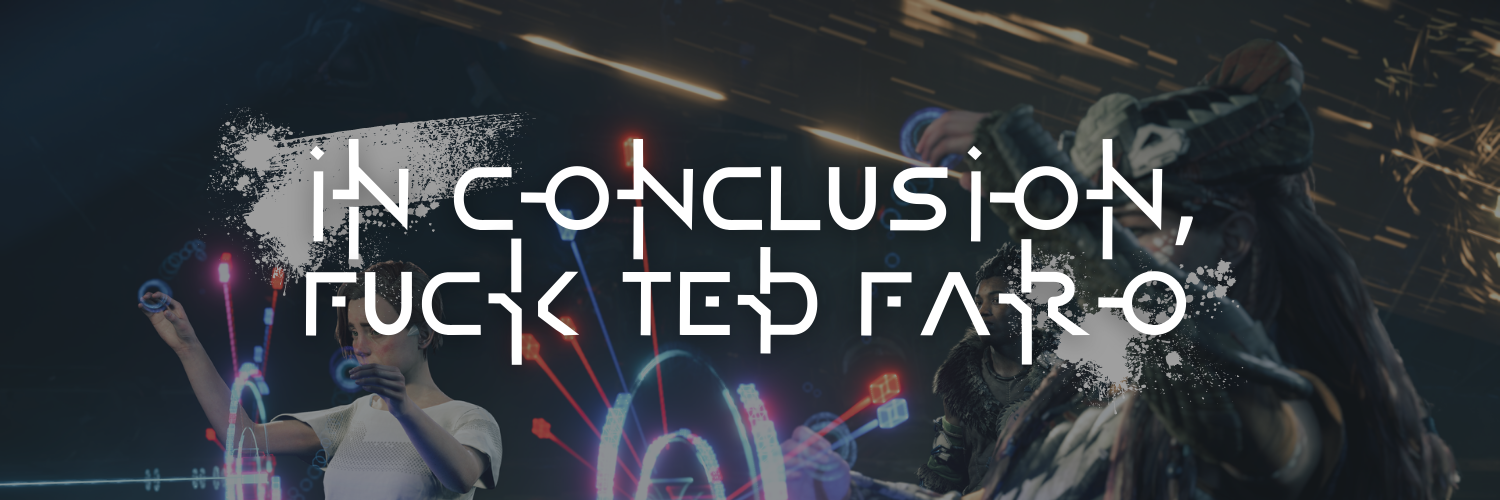
Last Looks!
The Horizon series features a wide variety of characters, perspectives, and worldviews — this is but one way of making this visible. Same as people, knowledge isn’t a monolith. Information changes meaning depending on context and perspective, and truth as a concept is constantly challenged. It’s to the games’ narrative’s credit that there is such breadth of interpretations, approaches, and conceptions of knowledge and information present, and that they’re such a key part of identity for so many characters and groups. Conceptions of knowledge and their ethics is one of my favourite themes in science and speculative fiction, so this was a treat for me, specifically.
And, all together now: fuck Ted Faro.
In memory of Lance Reddick, † March 2023.
Citations
Archive Abuse | Horizon Wiki | Fandom
Grigori Fasbach's Journal | Horizon Wiki | Fandom
Nemesis | Horizon Wiki | Fandom
Further Reading
Review: The Left Hand of Darkness by Ursula K. Le Guin
‘The Left Hand of Darkness’ at Fifty
Techno-Optimism vs. Pessimism vs. Nihilism — Dark Gray Matters
Nihilism and Technology (review)

